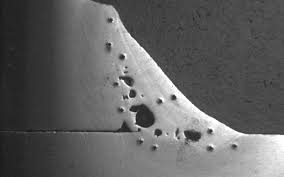Just how to Identify What is Porosity in Welding and Improve Your Method
Just how to Identify What is Porosity in Welding and Improve Your Method
Blog Article
Understanding Porosity in Welding: Checking Out Reasons, Effects, and Prevention Techniques
Porosity in welding is a persistent obstacle that can significantly impact the top quality and integrity of welds. As specialists in the welding market are aware, comprehending the reasons, effects, and avoidance techniques associated with porosity is vital for accomplishing durable and dependable welds. By delving right into the source of porosity, analyzing its detrimental results on weld quality, and exploring reliable avoidance approaches, welders can improve their knowledge and skills to create premium welds regularly. The detailed interaction of elements contributing to porosity requires a detailed understanding and an aggressive method to guarantee effective welding results.
Usual Reasons of Porosity
Contamination, in the type of dirt, oil, or corrosion on the welding surface, develops gas pockets when warmed, leading to porosity in the weld. Incorrect shielding occurs when the shielding gas, frequently used in procedures like MIG and TIG welding, is not able to fully shield the liquified weld pool from responding with the surrounding air, resulting in gas entrapment and subsequent porosity. In addition, poor gas insurance coverage, usually due to incorrect circulation prices or nozzle positioning, can leave parts of the weld unprotected, enabling porosity to create.
Effects on Weld Top Quality
The existence of porosity in a weld can considerably compromise the total high quality and integrity of the welded joint. Porosity within a weld creates gaps or cavities that damage the structure, making it more vulnerable to fracturing, rust, and mechanical failing.
Additionally, porosity can impede the performance of non-destructive testing (NDT) methods, making it challenging to identify various other flaws or suspensions within the weld. This can cause significant safety and security concerns, specifically in critical applications where the architectural honesty of the bonded parts is critical.

Prevention Techniques Overview
Provided the harmful impact of porosity on weld quality, reliable avoidance techniques are crucial to preserving the structural stability of welded joints. In addition, picking the appropriate welding criteria, such as voltage, existing, and travel rate, can assist reduce the danger of porosity development. By including these avoidance strategies right into welding practices, the event of porosity can be considerably decreased, leading to more powerful and a lot more reliable bonded joints.
Importance of Proper Protecting
Correct securing in welding plays an essential role in stopping atmospheric contamination and guaranteeing the integrity of welded joints. Shielding gases, such as argon, helium, or a blend of both, are typically utilized to protect the weld swimming pool from responding with components in the air like oxygen and nitrogen. When these reactive components enter into contact with the hot weld pool, they can create porosity, causing weak welds with decreased mechanical residential properties.

Inadequate shielding can cause different issues like porosity, spatter, and oxidation, endangering the structural honesty of the bonded joint. click to find out more Sticking to appropriate protecting practices is necessary to create high-grade welds with minimal issues and guarantee the long life and integrity of the welded elements.
Surveillance and Control Approaches
How can welders successfully monitor and manage the welding procedure to make sure ideal outcomes and stop issues like porosity? One secret approach is through making use of sophisticated surveillance modern technologies. These can consist of real-time tracking systems that provide responses on specifications such as voltage, existing, take a trip speed, and gas circulation prices. By click site continually checking these variables, welders can determine inconsistencies from the perfect problems and make prompt adjustments to avoid porosity development.

In addition, executing proper training programs for welders is essential for keeping track of and controlling the welding procedure successfully. What is Porosity. Educating welders on the significance of preserving constant criteria, such as proper gas shielding and travel speed, can aid prevent porosity problems. Normal assessments and certifications can also make sure that welders excel in monitoring and managing welding processes
Additionally, using automated welding systems can enhance surveillance and control capacities. These systems can specifically manage welding parameters, minimizing the likelihood of human error and guaranteeing consistent weld high quality. By integrating advanced monitoring modern technologies, training programs, and automated systems, welders can properly monitor and manage the welding procedure to minimize porosity defects and accomplish high-grade welds.
Verdict

Report this page